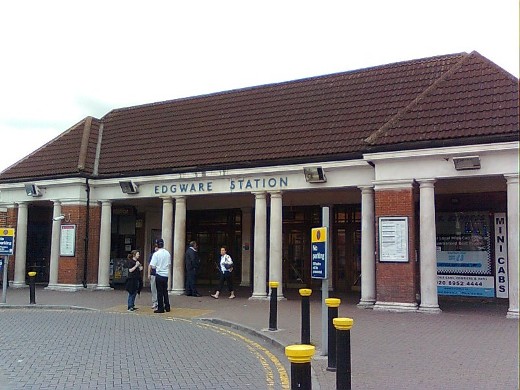
Edgware station, the northern terminus of the Edgware branch, was opened in 1924 as the terminus of the extension of the Charing Cross, Euston & Hampstead Railway and was designed by Stanley Heaps. Save for a short tunnel between Hendon Central and Colindale, the line runs at ground level or above from Edgware to just before Hampstead when it runs in tunnel to the terminus at Morden.
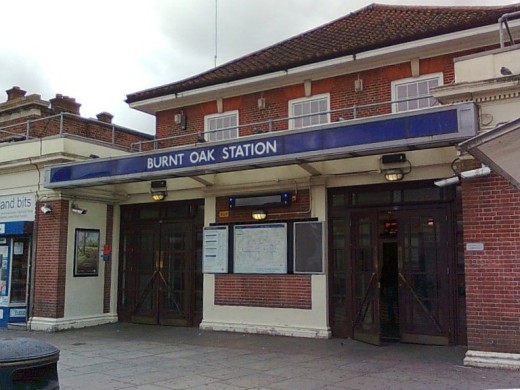
Burnt Oak station was also designed by Stanley Heaps and opened a couple of months after the stations either side on the line.
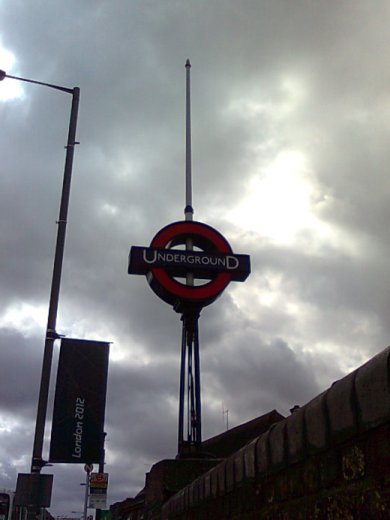
An interesting Underground roundel stands against a very dark sky on the bridge by Burnt Oak station.
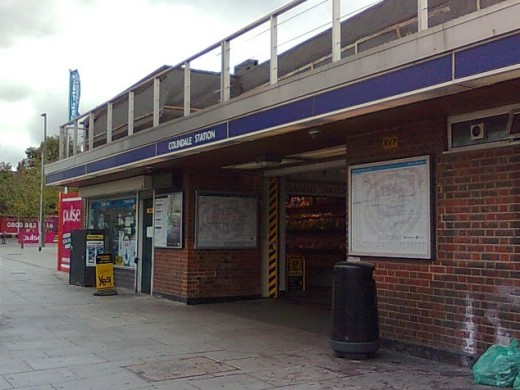
Colindale station. The original station building was destroyed by bombing in 1940. A temporary timber structure stood in its place until 1962 when the present building was built.
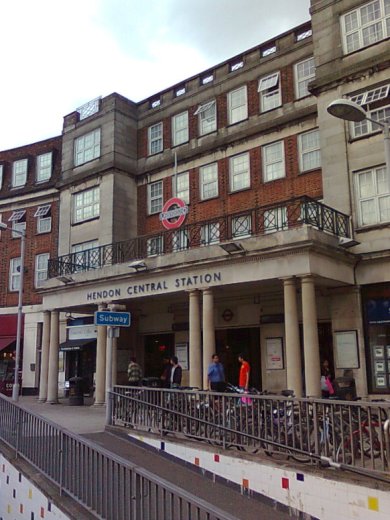
Hendon Central station, designed by Stanley Heaps in neo-Georgian style with Doric colonnade.
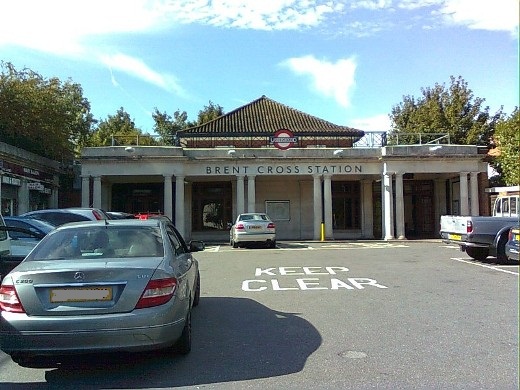
Brent Cross station, opened in 1923 and built in similar style to the previous station.
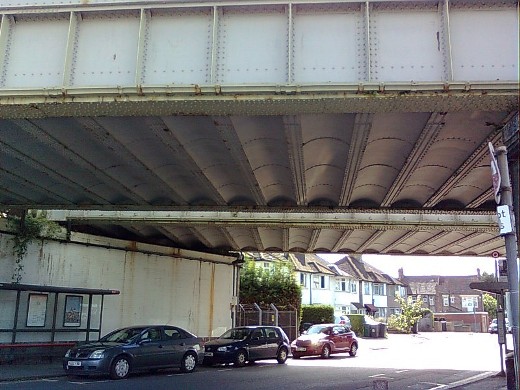
The bridge by the station with extra width built to accommodate two passing loops laid in order to allow fast trains to overtake slower ones. The extra tracks were removed in the 1930s.
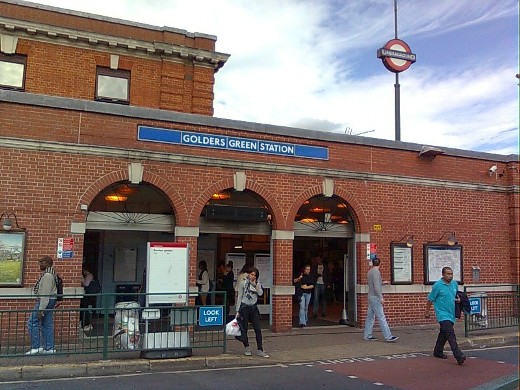
Golders Green station. Just beyond this station the line goes into tunnel until it nears Morden.
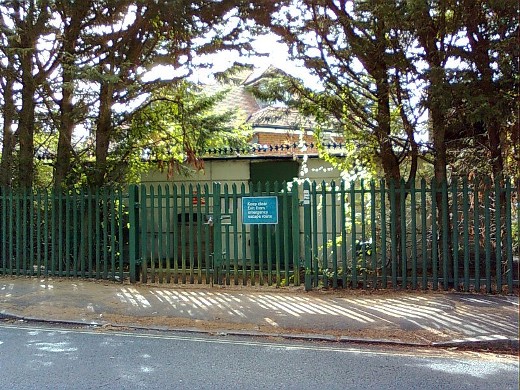
On the way to the next station evidence of what would have been North End station. In 1903 work started on the station with platforms and passages underground being built. In 1906, before the ground level station building was started, a decision was made to abandon the project. Access is still possible via 197 steps inside this building. Had it been brought into service, the station would have been the deepest on the Underground network. As it is, that record is held by nearby Hampstead.

Past the Old Bull & Bush which was also the alternative name for North End station. In days gone by it was the place Londoners would go for a good sing song and a knees up. Now it's an upmarket gastropub.
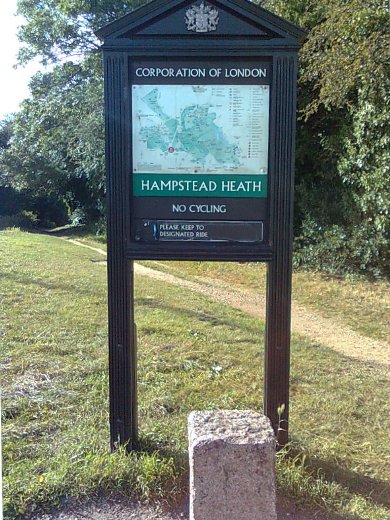
On past Hampstead Heath.
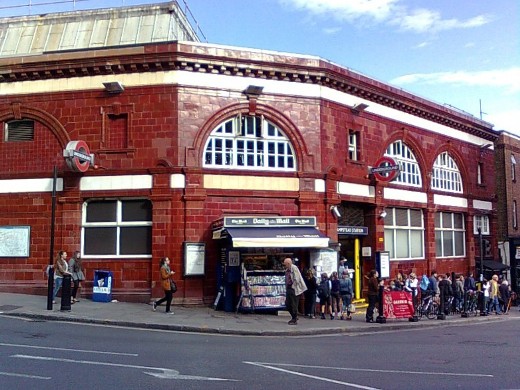
Hampstead station. At 192 feet below ground level it is the deepest on the Underground network. It also boasts the deepest lift shaft at 181 feet with several high-speed lifts. The spiral staircase, for anyone brave enough to try it, has over 320 steps. The station building is an obvious Leslie Green design.
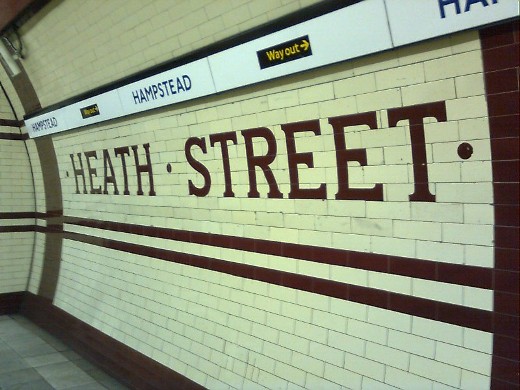
Hampstead station was originally going to be called Heath Street and tiling on the platform walls still shows that name.
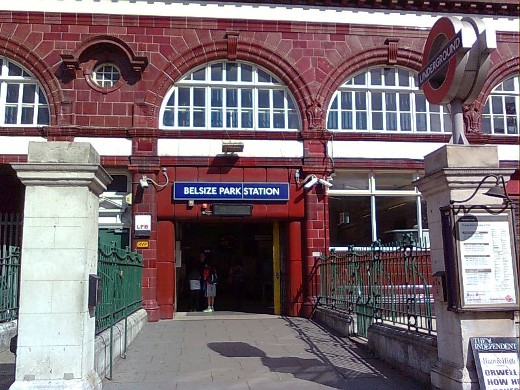
Belsize Park station similar in style to the previous station was also designed by Leslie Green. During World War II, air raid shelters were constructed at a lower level underneath the platforms for the use of service personnel and later opened up to the public.
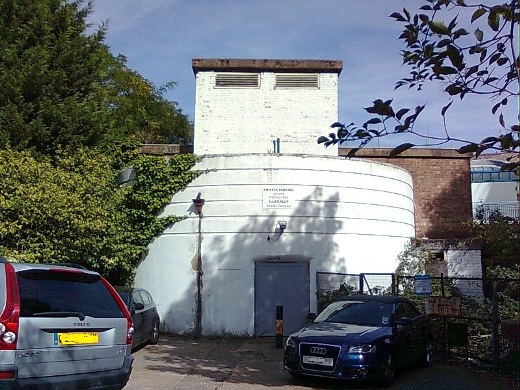
The northern entrance and ventilation shaft of the deep level shelter. The shelter consisted of two parallel tunnels about 1200 feet long, with upper and lower levels, with side passages and cross tunnels. It was equipped with 4,380 bunks, each one allocated to a named individual. There were also kitchens, bathroom areas and medical posts.
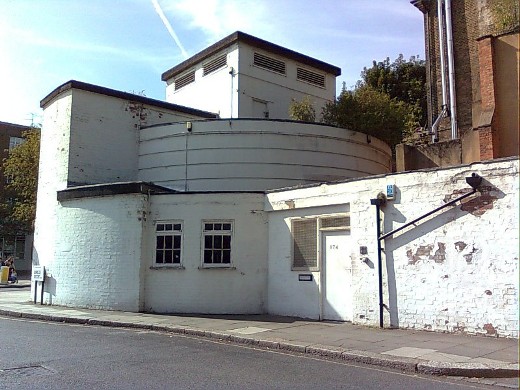
The southern entrance and ventilation shaft of the deep level shelter used today for access by a data storage company who has use of the tunnels.
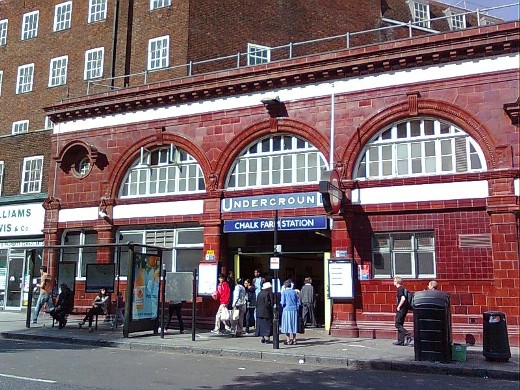
Chalk Farm station with the shallowest lift shafts of any on the Underground network. They are just 21 feet deep.
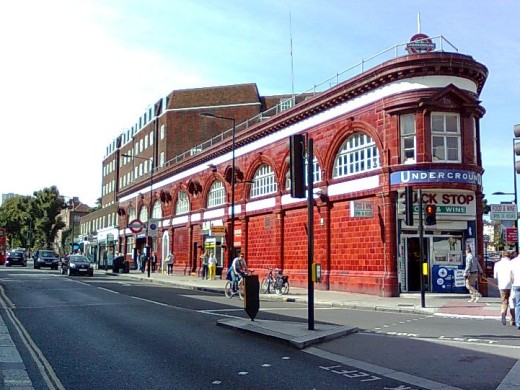
A view of the whole of Chalk Farm station building standing on a corner with windows either side of the building.
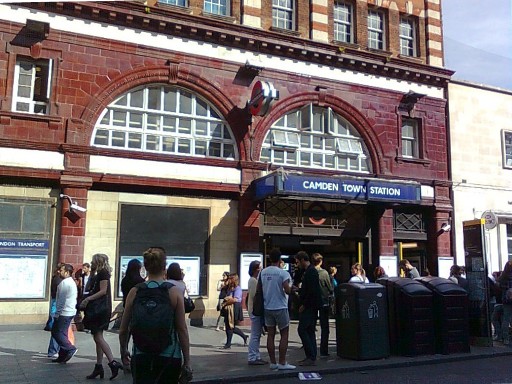
Camden Town station, the busy junction where the Edgware and High Barnet branches meet. The walk from High Barnet saw us coming to this station on the road in front of the other side of the building. From here the walk will follow the Charing Cross branch.
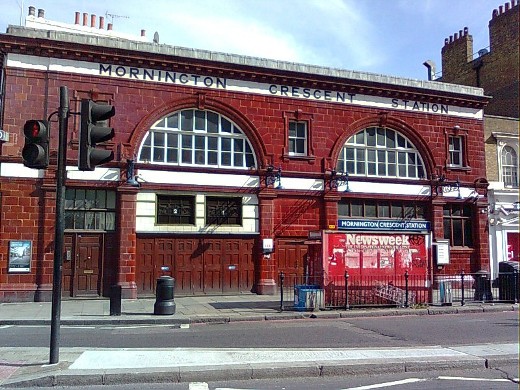
Mornington Crescent station served by trains on the Charing Cross branch while trains on the Bank branch take a different route bypassing the station altogether. Although the modern Underground map shows Mornington Crescent on the left hand branch of the line, it is in fact on the right of the Bank branch, as the two lines cross over at Euston.
In 1992 the station was shut in order for works to be carried out and there was talk of it staying closed permanently, but a successful public campaign resulted in it being refurbished and reopened in 1998 by the panelists of the BBC Radio programme 'I'm Sorry I Haven't a Clue' on which the game 'Mornington Crescent' is played.
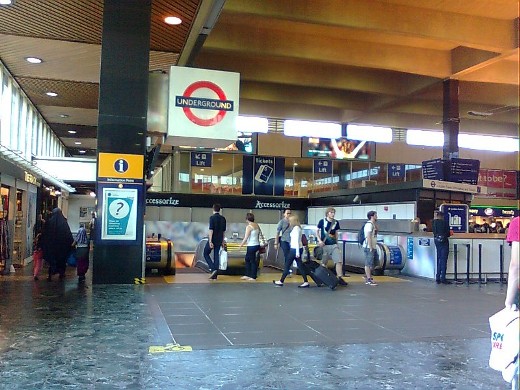
Euston station with the entrance to the Underground inside the mainline station.
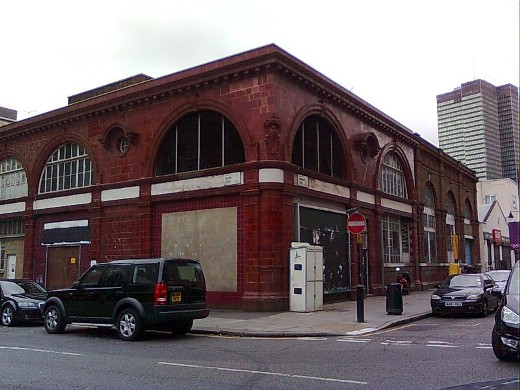
The former Euston station building of the original Charing Cross, Euston & Hampstead Railway stands not far away. Another obvious Leslie Green design.
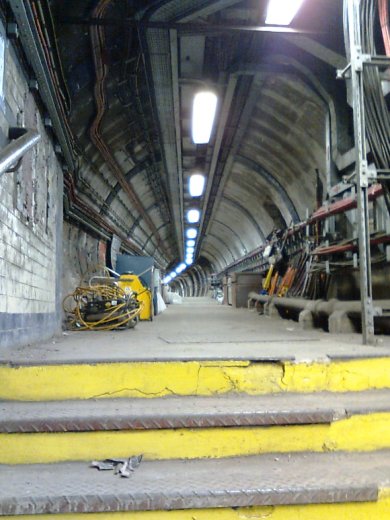
Behind one of the doors on the northbound Northern line platform into the disused part of the station.
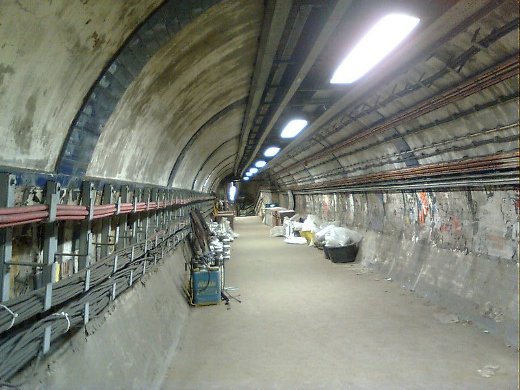
A tunnel leading to the old booking hall.
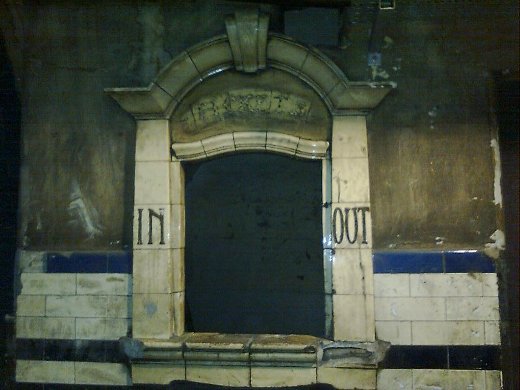
The old ticket office in typical Leslie Green style although the colouring is slightly unusual.
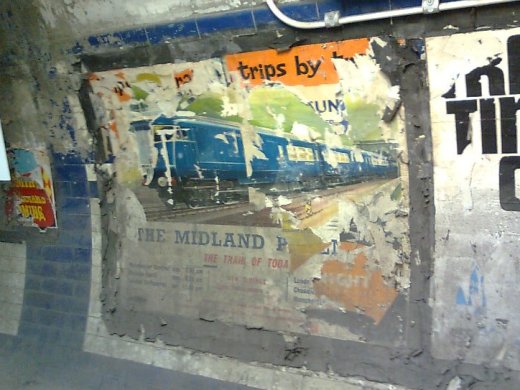
Adverts from the 1960s still on the walls.
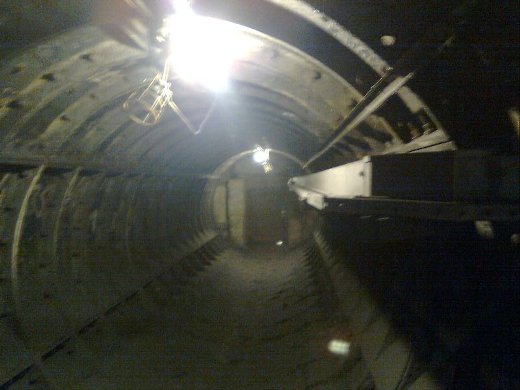
Walking through one of the ventilation tunnels.
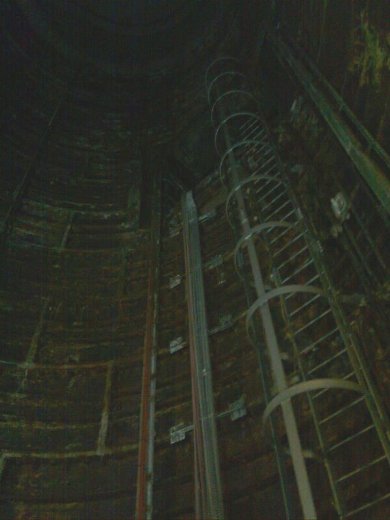
Looking up the ventilation shaft.
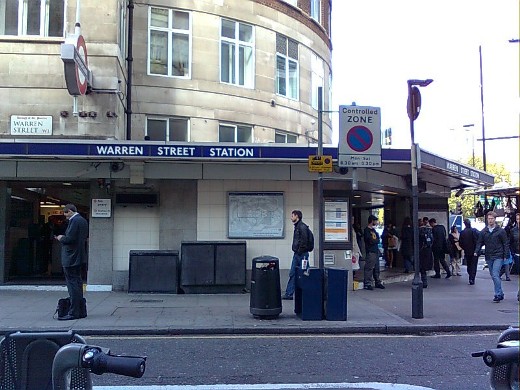
Warren Street station was opened in 1907 as Euston Road and the name changed the following year.
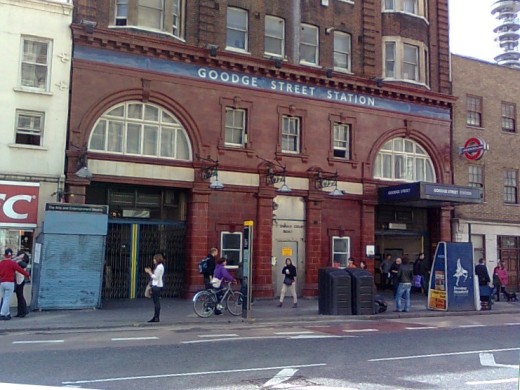
Goodge Street station was opened in 1907 as Tottenham Court Road but the name changed the following year when the present station of that name opened. A deep level air raid shelter was built below the platforms and used by General Eisenhower in 1944. After the war, the shelter was used as a hostel for troops.
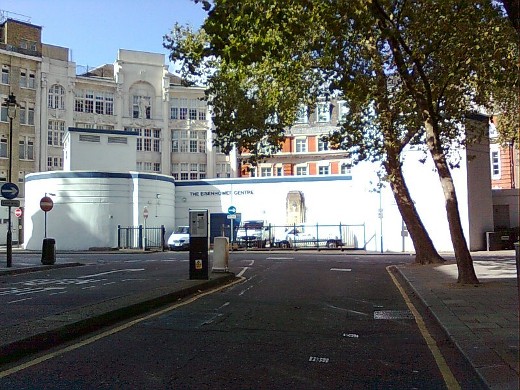
The east entrance to the deep level air raid shelter with ventilation shafts.
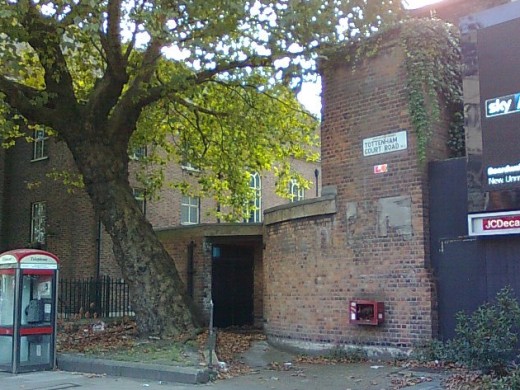
The west entrance to the shelter together with ventilation shafts. The entrance appears no longer to be used.
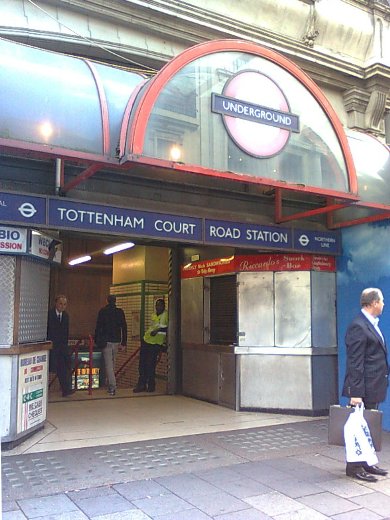
Tottenham Court Road station under new development scheduled to be finished in 2016.
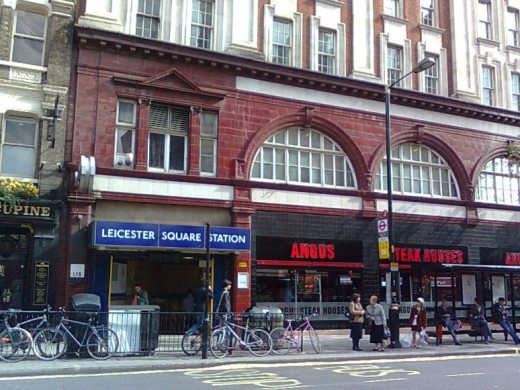
Leicester Square station. The platforms have pictures of film sprockets on the top and bottom of the display area to mark the fact that there are several premiere cinemas in Leicester Square.
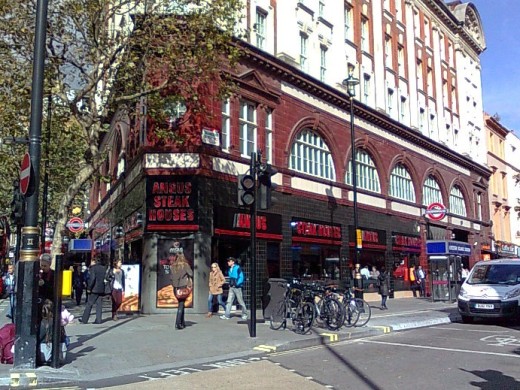
A view of the whole of Leicester Square station building standing on the corner with much of it used by a restaurant.
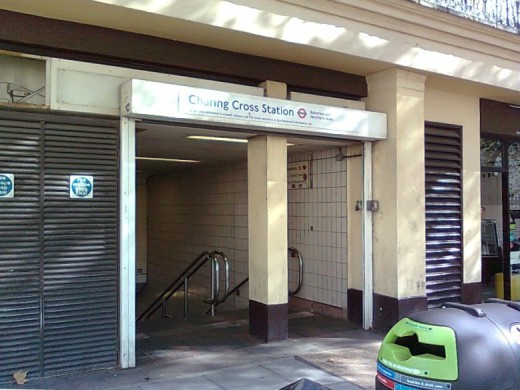
Charing Cross station was formed in 1979 by merging Strand and Trafalgar Square stations. Still today there are the two entrances to the station, one in the Strand and the other in Trafalgar Square.
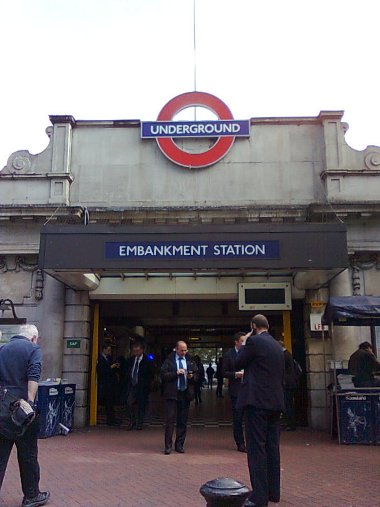
Embankment station just a few minutes walk down the road from the previous station. The walk now goes up the steps and over Hungerford Bridge.
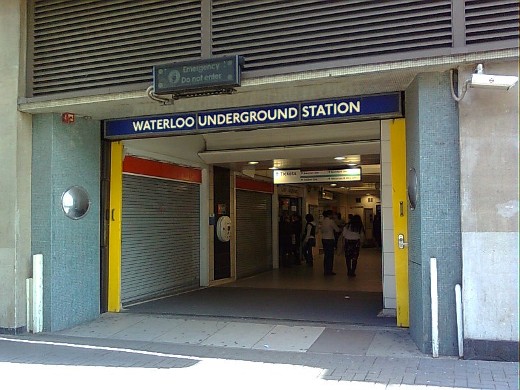
Waterloo station served by four Underground lines and the station with the most escalators.
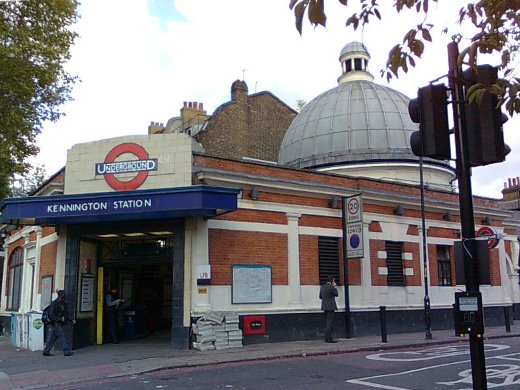
A second visit to Kennington station served by trains from both the Charing Cross branch and the Bank branch. Some trains terminate here and others go on to Morden.
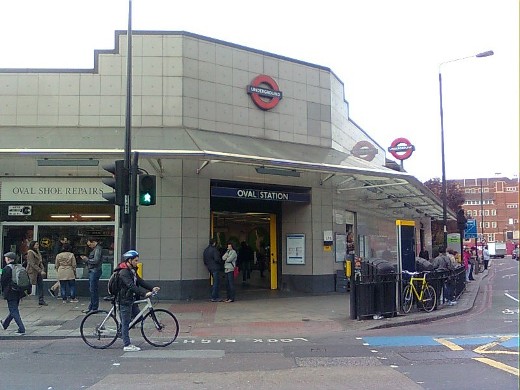
Oval station opened in 1890 as Kennington. It is situated 500 yards from the Oval cricket ground. Tiling inside the station includes images of cricketers. The building of a deep level air raid shelter was abandoned in 1942 due to flooding.
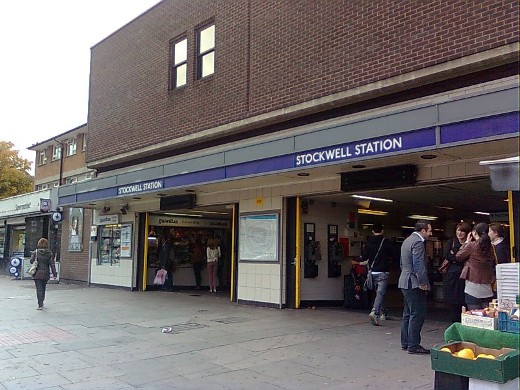
Stockwell station entrance. A deep level air raid shelter sited under the platforms was used by the government from 1942 until 1944 when it was used for a further year as a public shelter. It is now used for secure archiving.
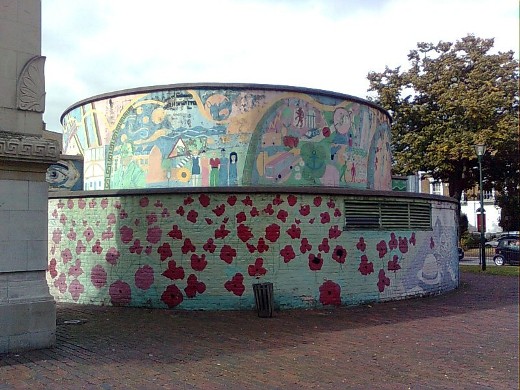
The north entrance of the shelter now decorated as a war memorial.
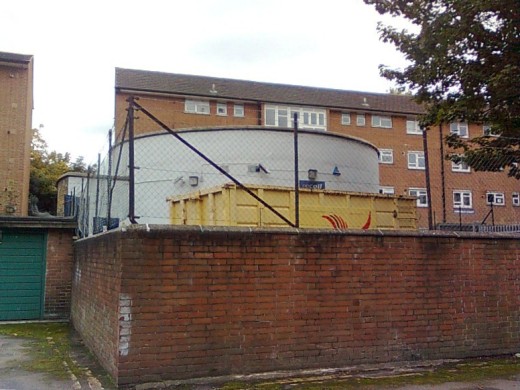
The southern entrance to the shelter.
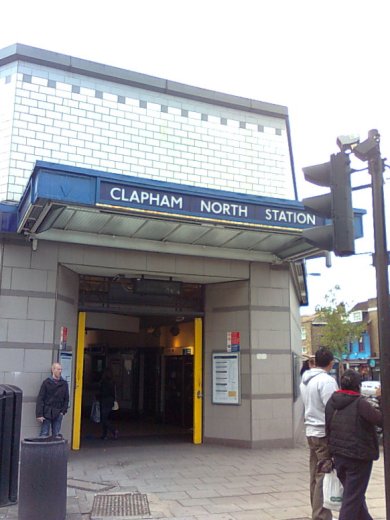
Clapham North station was opened in 1900. The station was designed by TP Figgis with the station building being remodelled by the architect Charles Holden in the mid 1920s. Charles Holden designed most of the stations between here and Morden.
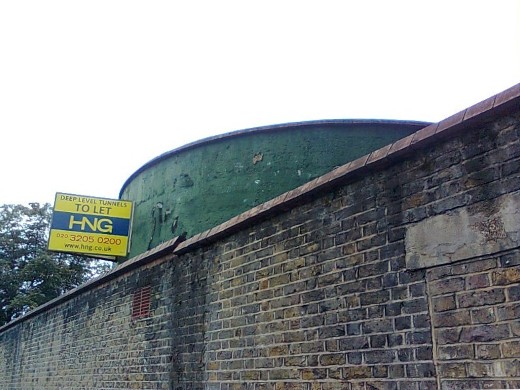
The northern entrance to the deep level air raid shelter below the station. The shelter is four storeys lower than the station itself. Some of the cross tunnels are unique in design, consisting of two circular tunnels forming a figure of 8 type of construction, giving more space than usual.
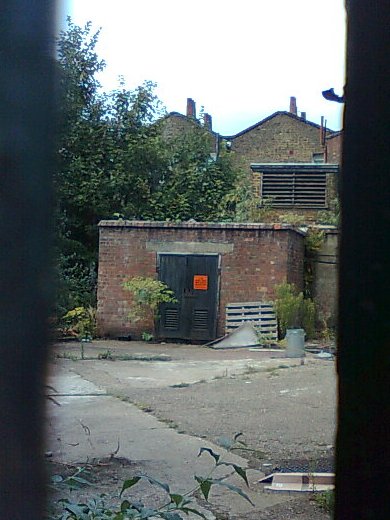
The southern shelter entrance is very different from the usual circular buildings we are used to seeing as it is just a simple small rectangular building with a door in the middle. It is in a yard behind the station and can only be seen through a crack between the gate and the gatepost. The taller building behind is one of the two ventilation buildings.
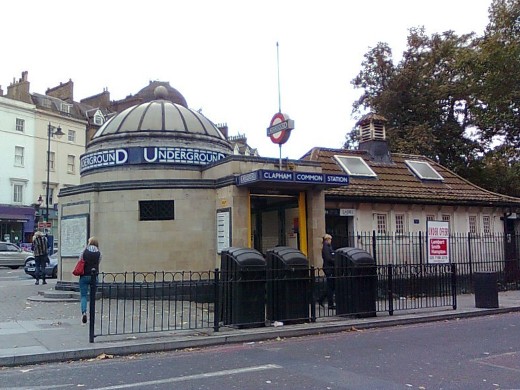
Clapham Common station building which simply contains steps down to the station. A deep level shelter exists below the platforms now used for storage purposes.
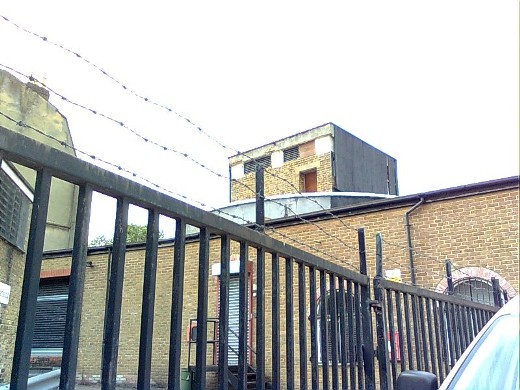
The north entrance to the deep level air raid shelter under the station can just be seen over the wall. The small building on the left of the picture is a ventilation shaft.
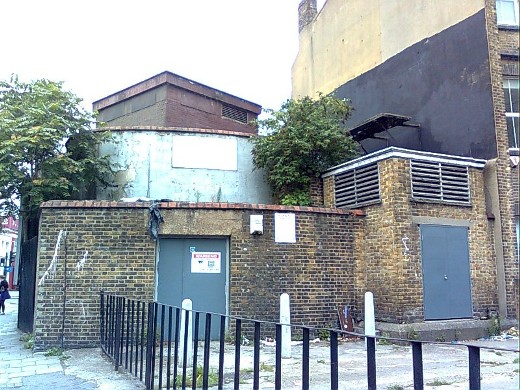
The shape of the south entrance to the shelter can't really be seen from the road. It is in fact a rough figure of 8 shaped building.
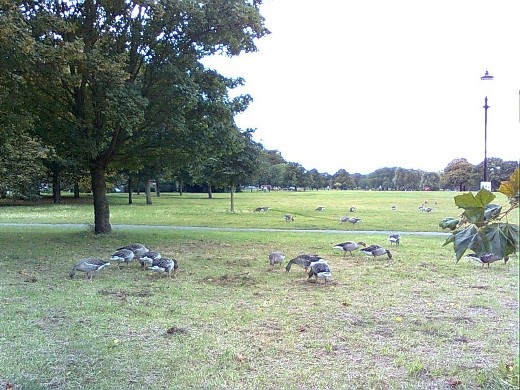
The walk takes us through lovely Clapham Common.
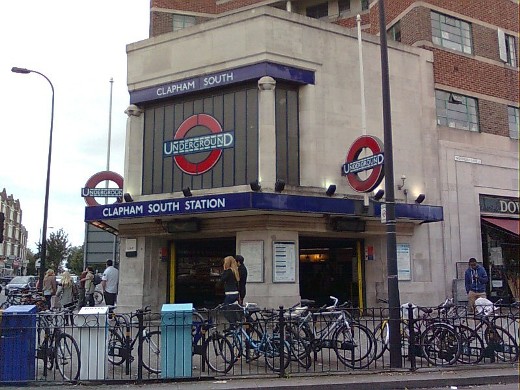
Clapham South station was opened in 1926 when the line was extended to Morden. The station is another with a deep level air raid shelter below.
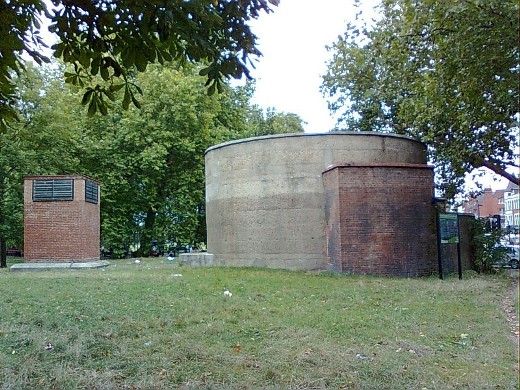
The circular northern entrance to the shelter with ventilation shafts beside. The shelter has been restored and explanatory notes on a board tell how it was used during the war and after. At the end of the war there was a labour shortage so in 1948 an offer was made to workers in Jamaica to travel to the UK by ship for 28 pounds 10 shillings each, and 492 people took up the offer. When they arrived, half of them had family or contacts in London with whom they could stay and the other half were accommodated in the shelter until they found their own places to live.
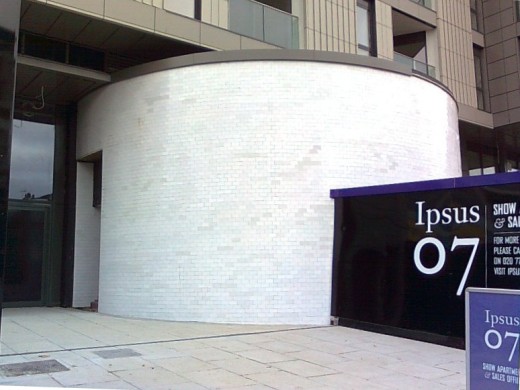
The southern shelter entrance has been covered in glazed tiling. The ventilation shafts have been demolished.
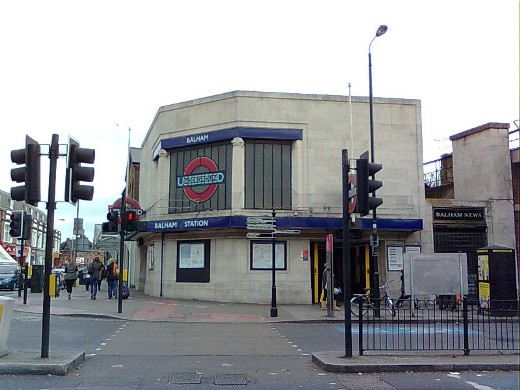
Balham station. A Charles Holden design similar to others on the line.
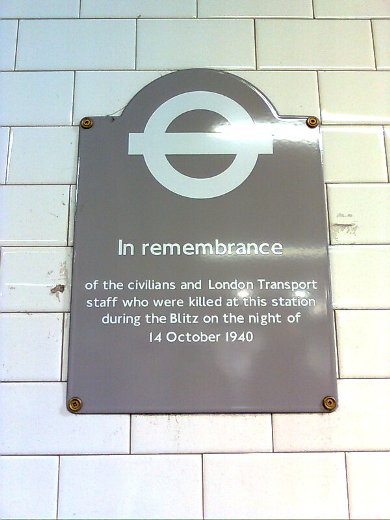
A memorial plaque on the wall in the ticket office.
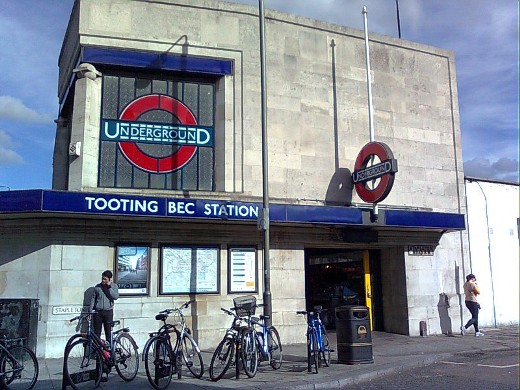
Tooting Bec station was opened as Trinity Road and renamed in the 1950s.
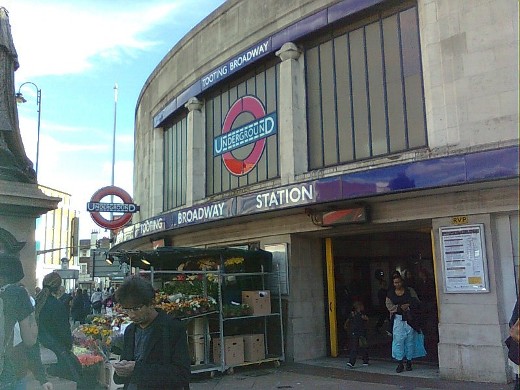
Tooting Broadway station. The statue just off left is that of Edward VII.
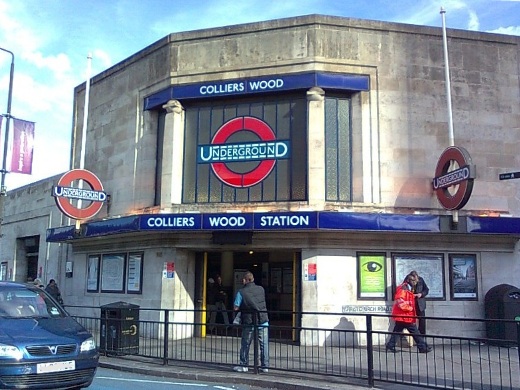
Colliers Wood station.
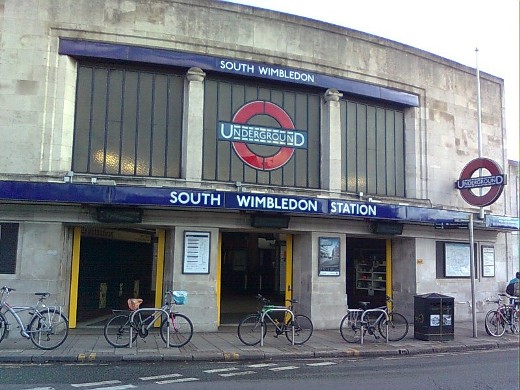
South Wimbledon station was named Merton Grove on the original plans but called South Wimbledon (Merton) when opened because it was thought that Wimbledon had a higher social standing than Merton. The Merton part was never shown on the nameplates at street level although it can still be seen on platform signs.
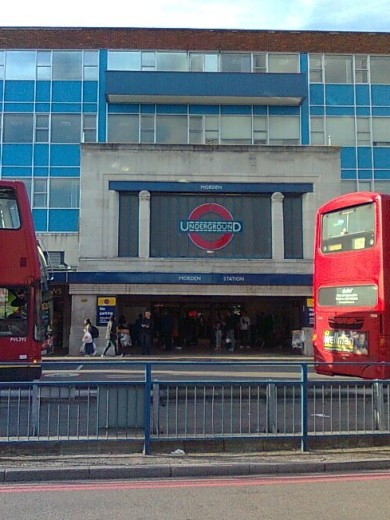
Morden station, the terminus of the Northern line and the most southerly station on the Underground network. The line comes out of tunnel just before the station. The station building was built on farmland giving the designer, Charles Holden, the opportunity to produce something far bigger and more elaborate than the previous stations.


